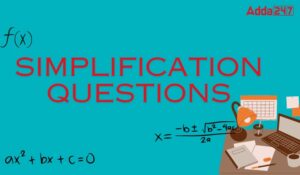Dear Students,
Quantitative Aptitude Questions for IBPS Exam
Quantitative Aptitude is a very important section you must prepare if you are aiming for a job in Bank or Insurance sector. These two weeks are very important as IBPS PO and Clerk Mains are lined up. So, these 15 questions can help you practice three very important topics of Quant Section.
Q1. In a company XYZ, the respective ratio between the total number of under graduate employees and the total number of graduate employees is 13 : 23. The company has only two branches, one in Mumbai and other in Delhi. If the total number of under graduate employees in Mumbai branch is 351, which is 30% of the total undergraduate employees in the company, what is the total number of graduate employees in the company?
(a) 2185
(b) 1955
(c) 2070
(d) 2691
(e) None of these
Q2. If the present population of a state is 27,500 and after 2 years it increases to 39,600 then what is the rate of increase per year?
(a) 25%
(b) 10%
(c) 17%
(d) 13%
(e) 20%
Q3. A merchant buys two items for Rs. 7500. One item he sells at a profit of 16% and the other item at 14% loss. In the deal the merchant makes neither any profit nor any loss. What is the difference between selling price of both the items? (in rupees)
(a) 625
(b) 610
(c) 620
(d) 630
(e) 615
Q4. A man sells an articles at 5% profit. If he had bought it at 5% less and sold it for Rs. 1 less, he would have gained 10%. The cost price of the article is
(a) Rs. 200
(b) Rs. 150
(c) Rs. 250
(d) Rs. 240
(e) None of these
Q5. A certain sum is invested for 2 years in scheme A at 20% p.a. compound interest (compounded annually), Same sum is also invested for the same period in scheme B at x% p.a. simple interest. The interest earned from scheme A is twice of that earned from scheme B. What is the value of x?
(a) 10
(b) 11
(c) 15
(d) 12
(e) 19
Directions (Q.6-10): In each of these number series one number is wrong. Find out the wrong number.
Q6. 312, 300, 264, 200, 120, 12
(a) 312
(b) 12
(c) 200
(d) 300
(e) None of these
Q7. 13, 25, 41, 62, 85, 113
(a) 62
(b) 25
(c) 113
(d) 85
(e) None of these
Q8. 18, 54, 162, 491, 1466
(a) 18
(b) 491
(c) 1466
(d) 54
(e) 162
Q9. 6, 13, 24, 37, 53, 73, 96
(a) 24
(b) 53
(c) 13
(d) 73
(e) 6
Q10. 1000, 100, 20, 8, 5, 6.16
(a) 100
(b) 8
(c) 6.16
(d) 5
(e) None of these
Directions (Q.11-15): Study the following table and bar graph to answer the questions given below it.
Q11. What is the ratio of the winning candidates from cities P, Q and R together to the participating candidates from cities S, T and U?
(a) 52 : 225
(b) 26 : 125
(c) 125 : 26
(d) 13 : 200
(e) None of these
Q12. What per cent of the candidates from city ‘T’ has been declared winner out of the total candidates participated from this city?
(a) 16%
(b) 26%
(c) 16.66%
(d) 18%
(e) None of these
Q13. What is the approximate percentage of candidates who won w.r.t. to those who participated from the cities Q and R together?
(a) 20
(b) 21
(c) 22
(d) 23
(e) 24
Q14. Which city has the highest percentage of candidates won w.r.t. to those who participated?
(a) P
(b) Q
(c) R
(d) S
(e) None of these
Q15. What is the average number of participating candidates from the cities P, Q and U together?
(a) 19800
(b) 2200
(c) 6600
(d) 8600
(e) None of these
You may also like to Read:
- Quantitative Questions for upcoming Banking and Insurance Examinations
- Study Notes of Quantitative Aptitude
- Practice More Data Interpretation Questions
- Quantitative Aptitude Section Strategy





 Simplification Questions For Bank Exams ...
Simplification Questions For Bank Exams ...
 Quantity Comparison Questions for Bank E...
Quantity Comparison Questions for Bank E...
 Mixture & Alligation Questions for B...
Mixture & Alligation Questions for B...





